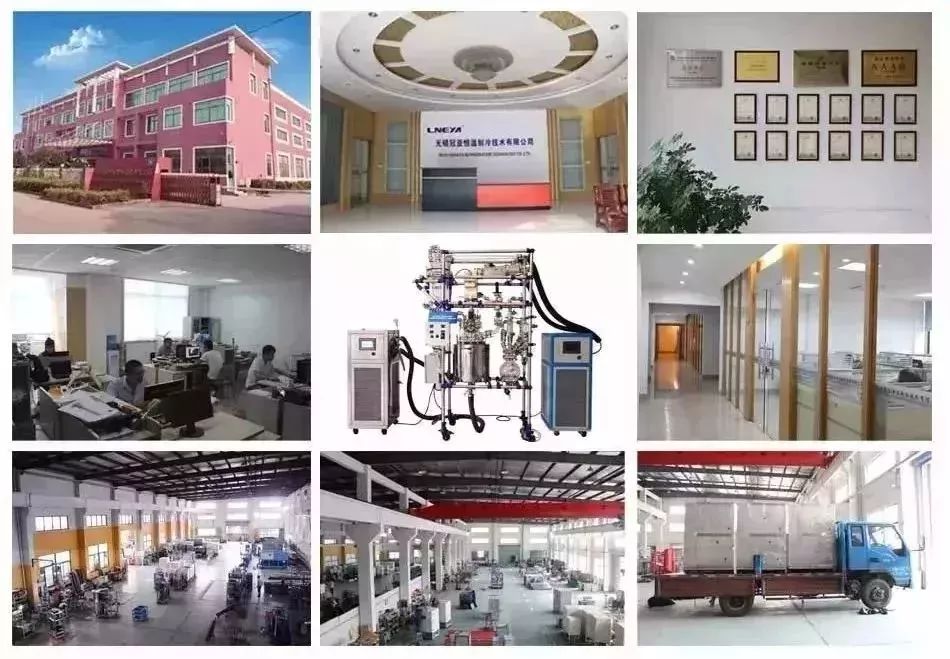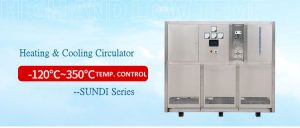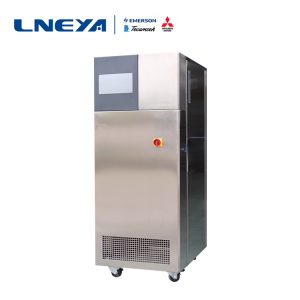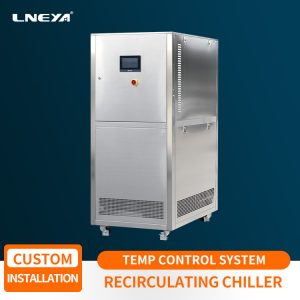The principle of LNEYA chiller
Industrial chillers are commonly used to cool products and machinery for a variety of different applications, including injection molding, tools and die cutting, food and beverage, chemicals, lasers, machine tools, semiconductors and more.
In most process cooling applications, the pumping system circulates cold water or water/glycol solution from the chiller to the process. This cooled fluid removes heat from the process and the warm fluid returns to the cooler. Process water is a means of transferring heat from the process to the cooler.
The process cooler contains a compound called a refrigerant. There are many types of refrigerants and applications depending on the temperature required, but they are all based on the fundamental principle of compression and phase change of the refrigerant from liquid to gas and back to liquid. This process of heating and cooling the refrigerant and changing it from a gas to a liquid and returning again is a refrigeration cycle.

The refrigeration cycle begins with a low pressure liquid/gas mixture entering the evaporator. In the evaporator, heat from the process water or water/glycol solution causes the refrigerant to boil and the refrigerant to change from a low pressure liquid to a low pressure gas. The low pressure gas enters the compressor where it is compressed into a high pressure gas. The high pressure gas enters the condenser, and the ambient air or condenser water removes heat and cools it into a high pressure liquid. The high pressure liquid moves to the expansion valve, controlling the amount of liquid refrigerant entering the evaporator, including restarting the refrigeration cycle.
LNEYA air-cooled cooling equipment uses ambient air to cool and condense hot refrigerant gas back into the liquid. It can be located inside the cooler or can be remotely located outside, but in the end it will block the heat from the cooler to the air. In a water-cooled condenser, water from the cooling tower cools and condenses the refrigerant.
Recommandations connexes
-
The importance of temperature cycle control heating and cooling in the production of API
1333China has become the world's largest supply market for APIs. Most of the APIs and intermediates required by foreign manufacturers are purchased in my country. The drug outsourcing process of most of its preparation products, the production process...
Voir les détails -
Commissioning of circulating water chiller equipment in the chemical industry
1047After completing the installation of circulating water chillers in the chemical industry, certain debugging needs to be carried out in the early stage of operation. Only through careful debugging can we find out whether there are hidden troubles i...
Voir les détails -
Semiconductor heating and cooling thermostat compressor fault detection instructions
804In the semiconductor heating and cooling thermostat, the compressor is one of its core components. Once it fails, it will affect the operation of the whole system. How to solve the fault is better? The faults of semiconductor heating and cooling t...
Voir les détails -
What are the main points for regular maintenance of the recirculating chiller?
957Recirculating chillers are used frequently in the industry, and the heat generating parts of various devices require recirculating chillers, so operating efficiency is very important. During the running time of the recirculating chiller, it is nec...
Voir les détails
 LNEYA Industrial Chillers Fabricant Fournisseur
LNEYA Industrial Chillers Fabricant Fournisseur














